Research Spotlight
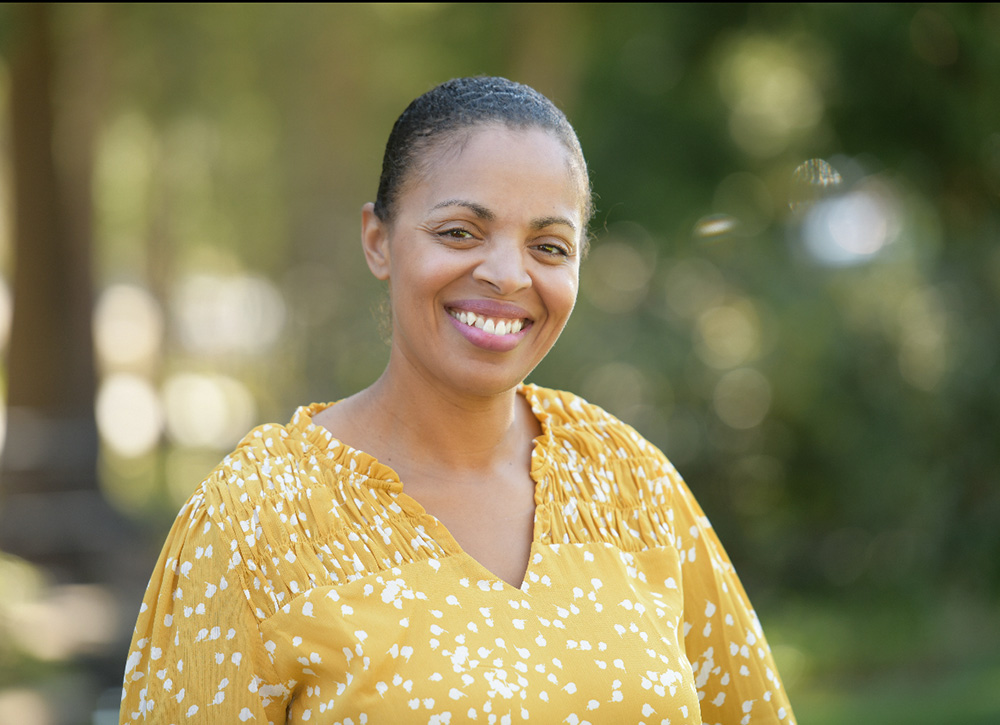
When Dr. Megan Burkhardt-Reed joined the University of Tennessee Health Science Center in 2025 as an Assistant Professor in the College of Health Professions, Department of Audiology and Speech Pathology, she brought with her a unique career path and a deep commitment to understanding how children learn to communicate.
Her journey to the field wasn’t straightforward. “After my undergraduate degree in Journalism and Psychology, I worked across different industries,” she recalls. “But I kept coming back to what really motivated me—nurturing communication and connection.”
That motivation crystallized while she was completing prerequisites for nursing school at the University of Memphis. A chance opportunity to work on an adult literacy project and develop content for intelligent tutoring systems opened her eyes to the impact of communication sciences. “It made me realize I wanted to pursue research and practice that could directly impact communication development,” she explains. A seminar on the evolution of language with her doctoral mentor, Dr. Kim Oller, sealed the deal. “Then, as they say, the rest is history.”
Burkhardt-Reed went on to earn her PhD in Communication Sciences and Disorders at the University of Memphis and later completed a highly competitive and prestigious two-year University of California President’s Postdoctoral Fellowship at UCLA in the Departments of Communication and Psychology.
Mentorship and Balance
Looking back, she says the most rewarding part of her career has been mentoring students. “Seeing them grow as researchers and clinicians is incredibly inspiring,” she says. At the same time, she acknowledges the challenges: “Balancing academic responsibilities with raising my children during graduate school and postdoctoral training was one of the hardest things I’ve done. It was demanding, but also profoundly rewarding.
Early Language, Lifelong Impact
Today, Burkhardt-Reed’s research focuses on how infants’ earliest sounds lay the foundation for language. In her current project, she collaborates with colleagues at UCLA to explore how babbling shapes language learning, especially during the critical second year of life.
“We know babbling matters, but we don’t yet understand how its continuation after children start using words influences development,” she explains. By studying naturalistic, longitudinal in-home recordings from diverse families, she hopes to uncover how early vocalizations evolve into meaningful speech.
Preliminary findings are already offering surprising insights. “At 24 months, many of children’s vocalizations are still exploratory sounds rather than clear words,” she notes. “We expected more complex babbling to line up with word use, but in many cases, it’s the simpler sounds—like ‘ma’ or ‘da’—that connect to children’s first words.”
Real-World Applications
Beyond the academic sphere, Burkhardt-Reed is passionate about the practical impact of her work. “Caregivers often wonder, ‘How should I respond to my child’s sounds, even when they aren’t real words yet?’ My research aims to provide evidence-based guidance,” she says. Her long-term goal is to inform both family interactions at home and clinical practices in speech-language pathology, ensuring children who may be at risk for language delays are identified and supported as early as possible.
Looking Forward
“I see my broad experiences giving me a unique perspective on language development,” she reflects. “My hope is to keep bridging research and clinical practice, and to inspire students to think creatively about how their work can make a real-world difference.”
Outside the Lab
When she’s not in the lab or classroom, Burkhardt-Reed enjoys time with her family, listening to music, and being outdoors, whether hiking in the woods or taking her kids to the park. She’s also a fan of fantasy novels, which she calls “a fun escape into other worlds,” and finds creativity and calm in cooking and baking.
From Yellow Fever to Data Analytics: Bridging History and STEM for Rural Classrooms
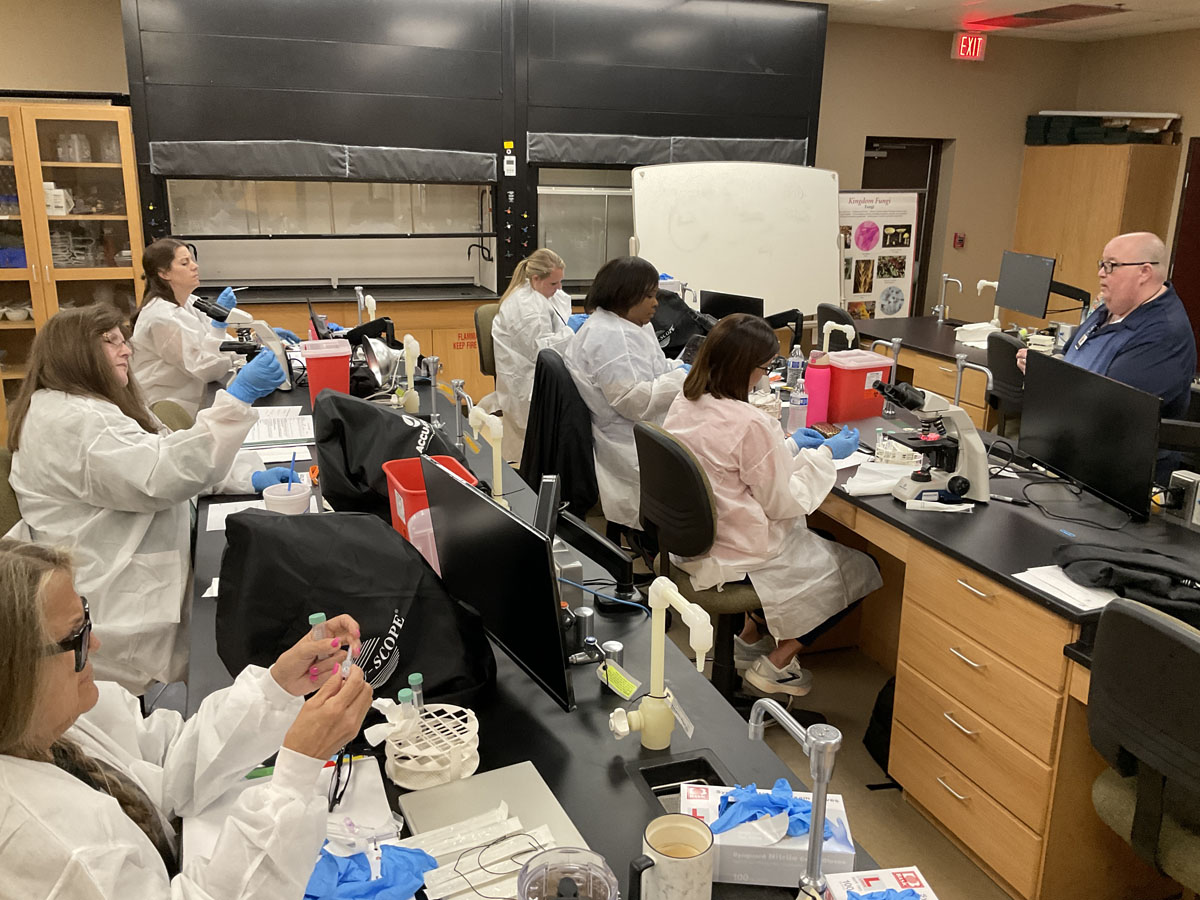
The College of Health Professions Research Office is proud to feature Dr. Rebecca Reynolds and her innovative project, “From Yellow Fever to Data Analytics: Hands-On Lab and Data Science Kits.” This creative initiative bridges historical public health events with modern STEM education to enhance learning in middle and high school classrooms across the Delta Region of rural Tennessee and Mississippi.
Dr. Reynolds, a Professor in the Department of Diagnostic and Health Sciences, brings more than two decades of experience at UTHSC and extensive expertise in Health Information Management. Her work in health data systems, medical coding, and information privacy deeply informs this project, which aims to promote health data literacy and inspire future healthcare professionals through hands-on, interdisciplinary education.
Funded by the Alliance of Women Philanthropists – Giving Circle, the project integrates history, science, and data literacy to help students understand the impact of public health and see its relevance in their own lives. It was inspired by Dr. Reynolds’ ongoing collaboration with educators through the High School 2 Health Care (HS2HC) program, where local teachers identified a need for engaging, curriculum-aligned content and classroom-ready resources to teach science and data analysis effectively.
To meet this need, Dr. Reynolds and her team developed a unique, cross-disciplinary approach centered on the historic Yellow Fever epidemic. “The Yellow Fever epidemic was a significant historical and health event,” Dr. Reynolds explains. “It offered the perfect opportunity to blend science, history, and writing into one meaningful learning experience.”

The project is a collaborative effort involving faculty in cytopathology, clinical laboratory science, health informatics, and information management, in partnership with the UT Martin Ripley Center. By focusing on rural school districts in the Mississippi Delta, the initiative aims to strengthen STEM education and improve health literacy in underserved communities. Dr. Reynolds believes health data literacy is essential for making informed health decisions and by introducing it early, we’re empowering students and building foundational knowledge that benefits entire communities.
At the core of the project are classroom kits designed to be practical, scalable, and engaging. Each kit includes standards-based lesson plans, lab supplies, hands-on activities, and data analysis tools, all framed within problem-based learning scenarios. “Teachers need content that connects to real careers and experiences, this model gives them that flexibility and support”.
Beyond strengthening science education, the project also aligns with Dr. Reynolds’ broader research goal to raise awareness of health informatics and information management as a dynamic and meaningful career path. By introducing students and teachers to this emerging field, the initiative fosters interest in health technology and data science from an early age.
For educators interested in blending history and STEM in their classrooms, Dr. Reynolds offers this practical advice: “Look closely at your state’s curriculum standards. You’ll often find natural intersections between subjects. That’s what made Yellow Fever such a compelling choice, it lends itself to science, social studies, math, and writing.”
Through her creativity, collaboration, and commitment to community impact, Dr. Reynolds is demonstrating the power of research to solve real-world educational challenges. The College of Health Professions is proud to highlight her work as a shining example of UTHSC’s mission to educate, serve, and inspire.
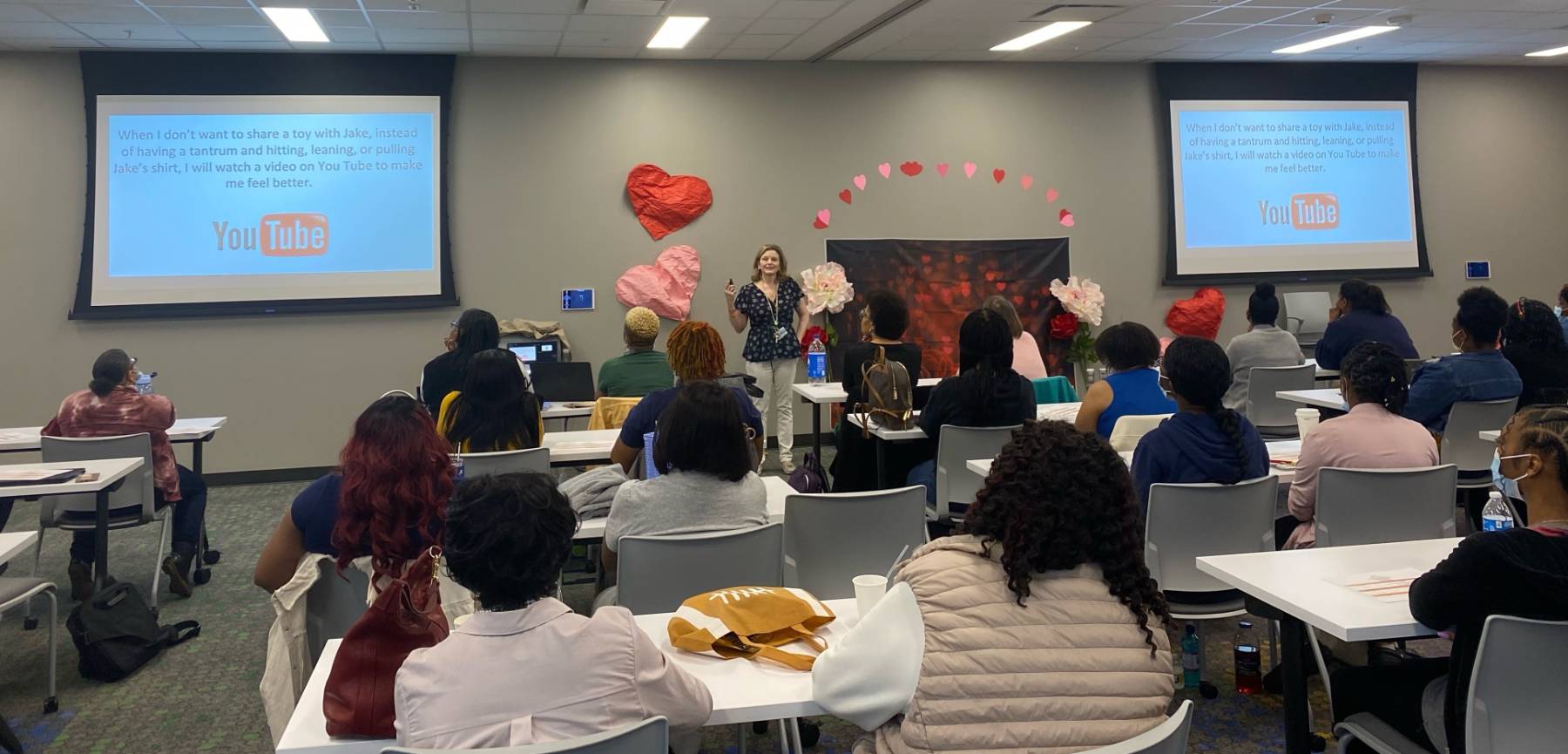
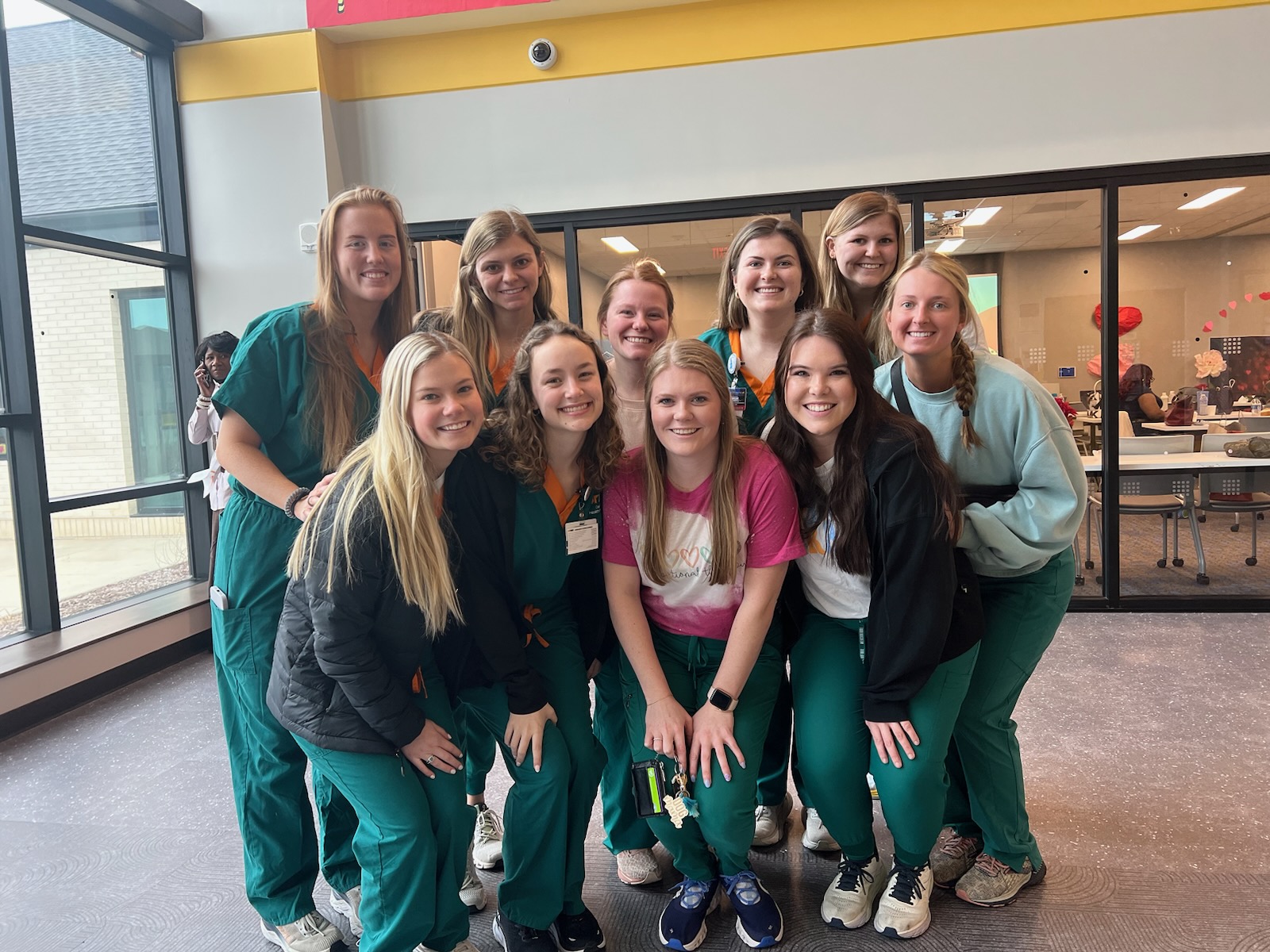
College of Health Professions Research Spotlight: Advancing Pediatric Occupational Therapy at UTHSC
The University of Tennessee Health Science Center’s (UTHSC) College of Health Professions is proud to highlight the achievements of our occupational therapy students and faculty through the impactful work of the Rachel Kay Stevens Therapy Center (RKSTC) and Project SPARK. These initiatives exemplify our commitment to fostering excellence in future healthcare leaders while advancing research and service in pediatric occupational therapy.
Rachel Kay Stevens Therapy Center: A Student-Driven Mission
The Rachel Kay Stevens Therapy Center (RKSTC) is a student-run, pro bono occupational therapy (OT) clinic dedicated to serving uninsured and underinsured children and families in the Mid-South region. Established in 2016, the center honors the legacy of Rachel Kay Stevens, a passionate OT student whose vision for making a difference continues to inspire. The clinic is managed by a board of UTHSC Master of Occupational Therapy (MOT) students under the guidance of faculty advisor Dr. Anne Zachry.
At RKSTC, MOT students gain invaluable hands-on experience through supervised clinical practice. Under the mentorship of licensed OT practitioners, students participate in developmental screenings, occupational therapy evaluations and interventions, and patient and family education. Services are provided both in person and via telehealth, ensuring accessibility for all families in need. Beyond clinical practice, the center serves as a hub for faculty-led research aimed at enhancing pediatric occupational therapy services.
Project SPARK: Empowering Preschoolers for Kindergarten Readiness
One of RKSTC’s flagship initiatives, Project SPARK ((S)upporting (P)reschoolers to (A)chieve (R)eadiness for (K)indergarten), is funded by the Urban Child Institute and is a testament to the center’s commitment to community outreach and evidence-based practice. Led by Dr. Zachry and Dr. Lauren Woods, with support from MOT students, Project SPARK is designed to:
- Provide developmental screenings and OT interventions to children with identified delays and their families.
- Educate parents on child development, family routines, daily reading, and interactive conversations through kindergarten readiness workshops.
- Equip preschool teachers with evidence-based strategies to support children’s development
and preparedness for kindergarten.
The impact of Project SPARK extends beyond the clinic, as its findings contribute to the broader field of pediatric OT. Notably, research stemming from the project was published in the Journal of Occupational Therapy, Schools, & Early Intervention in 2019, reinforcing the initiative’s significance in advancing best practices in school readiness interventions.
Expanding Research and Impact
Dr. Zachry emphasizes the ongoing efforts to expand research at RKSTC, aiming to strengthen the evidence base for pediatric occupational therapy interventions. “By broadening our research efforts, we aim to enhance best practices, improve outcomes, and contribute valuable data to the field of pediatric occupational therapy. Through continued services and outreach, we remain committed to making a meaningful, lasting impact on the children and families we serve.”
UTHSC’s College of Health Professions remains dedicated to equipping the next generation of occupational therapists with the skills, knowledge, and research experience necessary to drive innovation and excellence in healthcare. The achievements of our students and faculty at RKSTC and through Project SPARK exemplify our unwavering commitment to shaping the future of pediatric occupational therapy.
Reference: Zachry, A. H., Woods, L., & Jones, T. (2019). Parental Perceptions of Competence Related to School Preparation for Their Children after Participation in a Brief Kindergarten Readiness Workshop. Journal of Occupational Therapy, Schools, & Early Intervention. https://doi.org/10.1080/19411243.2019.1700474
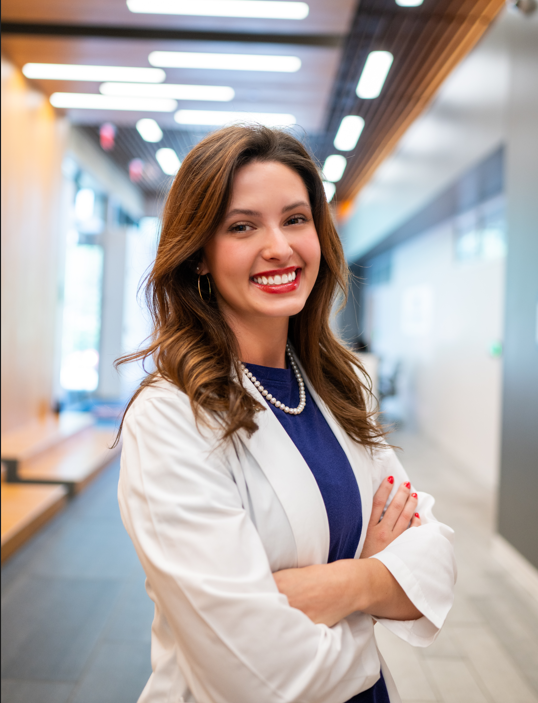
Haley Rodgers
Student Physical Therapist
College of Health Professions, Department of Physical Therapy
The University of Tennessee Health Science Center
Haley Rodgers is a second-year Physical Therapy student whose journey into the field was deeply influenced by her early life experiences. As a child, Haley helped care for her grandmother during her battle with cancer, an experience that instilled in her the values of compassion and resilience and sparked her desire to dedicate her life to helping others.
Throughout her childhood, Haley was an active individual and a competitive athlete. However, in high school, she shifted her focus to academics and student government, stepping away from sports. Over time, she recognized the importance of balancing her personal well-being with her professional aspirations. This realization reignited her interest in physical health and led her to explore human movement and rehabilitation. With guidance from her brother, a personal trainer, and witnessing the positive impact of exercise on her mother’s joint pain and arthritis, Haley began strength training.
This journey not only improved her own physical health but also inspired her passion for helping others achieve their health goals. These experiences motivated her to pursue a degree in kinesiology and a career in physical therapy, combining her love for science, movement, and empowering others.
Can you describe a project or assignment that has been particularly impactful or memorable for you?
It's difficult to choose just one because I’ve had so many rewarding experiences. However, the most memorable ones are the projects where I combined my personal experiences with my academic knowledge, especially those where I worked on rehabilitation strategies for patients. These assignments helped me see the real-world impact of kinesiology and physical therapy, and the ability to design tailored plans for recovery truly resonated with me.
Have you had any hands-on clinical experiences? If so, how has your study of kinesiology enhanced your ability to provide patient care?
I completed my first clinical rotation this past summer. My study of kinesiology has greatly enhanced my ability to care for patients. Understanding body anatomy and physiology, the ability to differentiate between and diagnose conditions, and having the empathy to connect with patients are all critical skills. Patients often come to us in vulnerable states, dealing with pain and fear. As a physical therapist, it's our responsibility to guide them through recovery, using our knowledge to help them regain mobility and reach their personal goals.
Have you considered pursuing research in kinesiology or physical therapy? If so, what topics or questions interest you most?
I am interested in contributing to research in kinesiology and physical therapy. Once I’ve gained practical experience in the field, I am particularly interested in working with the American Physical Therapy Association (APTA). After I have completed a few years of practice, I hope to identify areas where I can contribute to advancing the field, potentially focusing on treatment innovations or improving patient care protocols.
What role do you see kinesiology playing in advancing treatments or interventions in physical therapy?
Kinesiology plays a vital role in advancing treatments in physical therapy, as understanding human movement is essential for developing effective interventions. By studying the body’s ability to move, we can identify the best approaches to treat various conditions and pathologies. Advances in kinesiology can lead to more affordable treatments that promote independence, reduce comorbidities, and ultimately decrease the need for frequent hospital or doctor visits.
Looking ahead, how do you plan to integrate your kinesiology knowledge into your future career as a physical therapist?
I plan to specialize in sports medicine because of my passion for functional movement and promoting physical activity. I also aim to specialize in pelvic floor therapy, an underserved area of physical therapy. I believe I can offer comfort and support to patients, especially those dealing with sensitive conditions such as pregnancy, high level athletics, aging, etc. By combining these specialties, I hope to provide comprehensive care to a diverse range of patients.
What advice would you give to incoming students about excelling in kinesiology coursework?
My best advice is to practice what you preach! Moving your body is essential for both physical health and mental well-being, so take care of yourself, especially during stressful periods. There's a lot to learn about the human body, so be prepared to dedicate yourself to your studies. Additionally, always stay curious and ask questions. The key to excelling in kinesiology is applying your knowledge in real-world scenarios, whether that’s adapting exercises for individual patients or learning from your mentors and teachers. Hands-on experience is invaluable, so make sure to take full advantage of clinical and observational opportunities.
What are some of your hobbies or interests outside of school?
Outside of school, I enjoy working out, spending time with my dogs, and playing guitar. These activities help me maintain a healthy balance and recharge, which is essential for staying focused on my studies and future career.
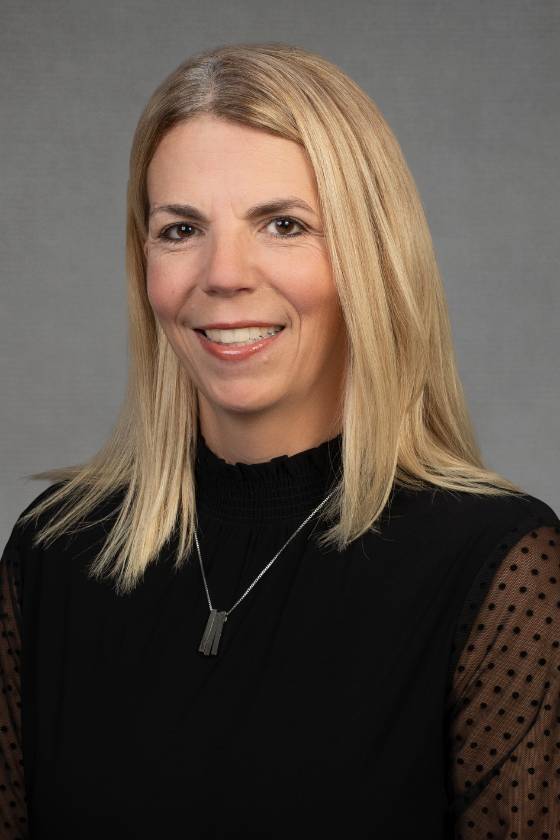
Ashley Harkrider, PhD
Professor and Department Chair for Audiology and Speech Pathology
Dr. Ashley Harkrider, professor and chair of UT Health Science Center’s Department of Audiology and Speech Pathology in Knoxville is leading an initiative to bring audiology, speech-language pathology, and social work services to underserved communities. With the support of a recent UT Grand Challenge Grant, she and her team are positioned to make a meaningful impact on healthcare access for rural Tennesseans.
Could you share details about the “Mobile Interprofessional Tandem Service (MITS) Model to Enhance Audiology and Speech Pathology Care and Outcomes in Rural East Tennessee”? What motivated your team to focus on the unique needs of rural communities in East Tennessee, and how do you plan to implement this project?
Many rural Tennesseans lack access to essential audiology and speech-language pathology (SLP) services due to a shortage of professionals, resulting in undiagnosed and untreated impairments. Families, schools, and aging centers are burdened with the responsibility and often lack the infrastructure to meet these healthcare needs. Patients seeking treatment at urban centers may often need to travel long distances, missing work or school and face challenges navigating the healthcare system. Patients and families often leave feeling overwhelmed with concerns about the financial burden required for ongoing care, resulting in poor adherence to follow-up treatments. In response, UTHSC’s Audiology and Speech Pathology (ASP) department and UTK’s College of Social Work (SW) are partnering to improve rural healthcare access in Tennessee through a Mobile Interprofessional Tandem Service (MITS) model. This mobile clinic, staffed by ASP faculty, audiology and SLP student clinicians, and social work students, will bring comprehensive care directly to rural communities. Equipped to diagnose and treat hearing, language, and speech disorders, the clinic will travel several days per week to reduce the need for patients to travel long distances and provide them with multidisciplinary healthcare services and continuity of care in their own communities.
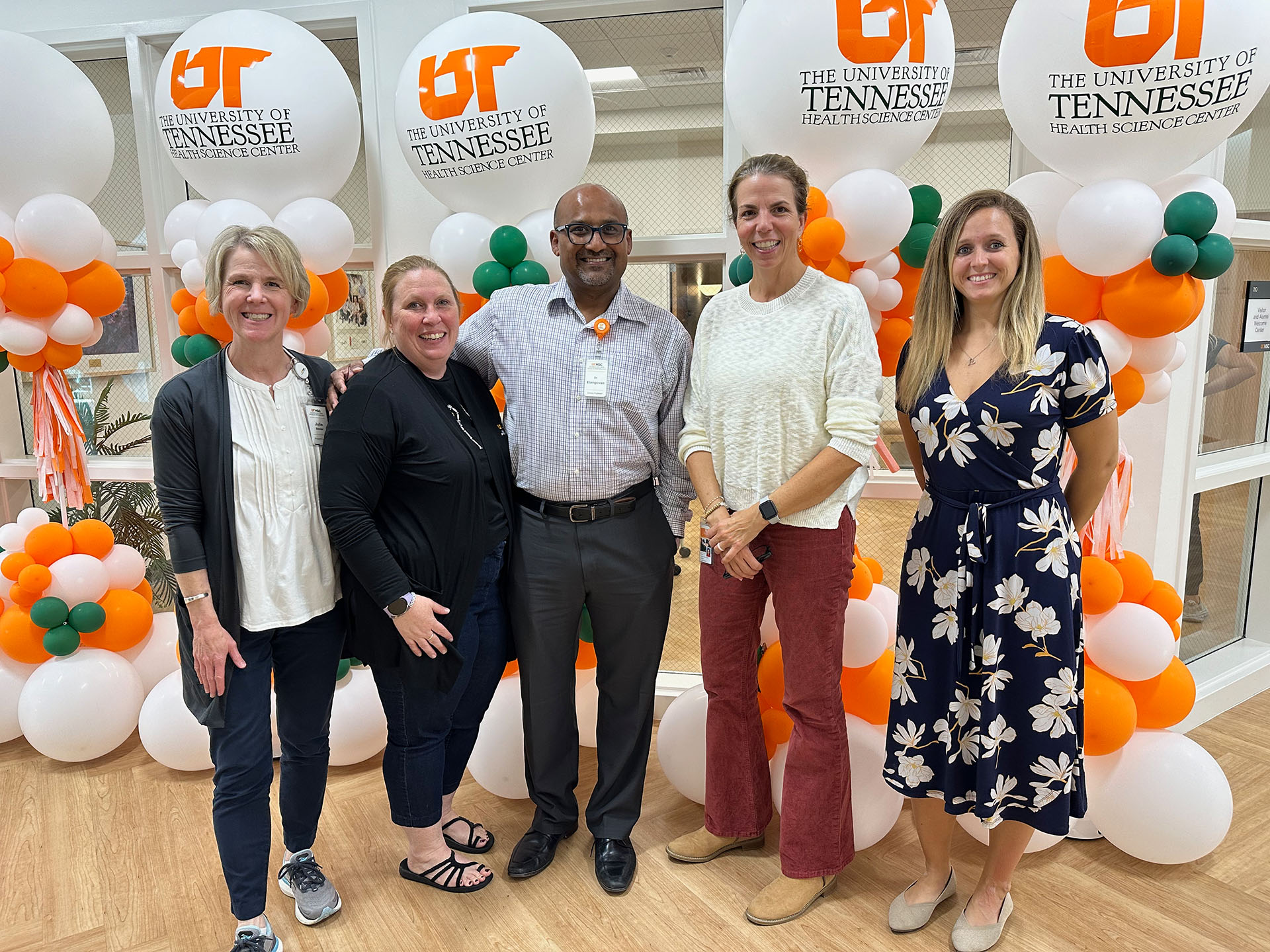
What key outcomes are you hoping to achieve in terms of patient care and accessibility?
The MITS model will remove healthcare barriers for rural Tennesseans by bringing specialized, multidisciplinary care and resources directly to their communities. Social Work (SW) will help assess community needs and optimize mobile services, enhancing health outcomes for local partners. Additionally, K-12 students, seniors, and families will benefit from increased health literacy and exposure to healthcare careers. UTHSC and UTK student clinicians will gain valuable insights into rural health challenges and social determinants, recognizing the impact of accessible healthcare and the efficiency of collaborative, interprofessional care in reducing health disparities and improving overall health outcomes.
How does this research align with broader trends in healthcare for underserved communities?
The MITS model addresses the widespread issue of underserved individuals by bringing comprehensive, multidisciplinary care directly to rural communities. In alignment with trends toward expanding remote healthcare, MITS will offer in-person services on-site and use telehealth between visits to maintain continuity of care for rural patients.
What potential do you see for mobile healthcare models in other areas of audiology, speech pathology, or even other healthcare fields?
External partners, including county schools, senior centers, and long-term care facilities across East, Central, and West Tennessee, have expressed strong demand for the MITS model, highlighting a significant need in these rural areas. The potential for expansion is substantial.
Are there plans to expand this model beyond rural East Tennessee once it’s implemented?
Faculty and students from UTHSC ASP and UTK SW will collect and analyze data from the MITS project to support future grant applications aimed at expanding services and reducing healthcare inequities in underserved Tennessee communities. The MITS model is a step toward establishing a Center of Excellence for Interprofessional Practice and Education, incorporating disciplines like social work, occupational therapy, and physical therapy. This collaborative model will improve patient care, address community needs, and provide UTHSC and UTK students with diverse, multidisciplinary educational experiences.
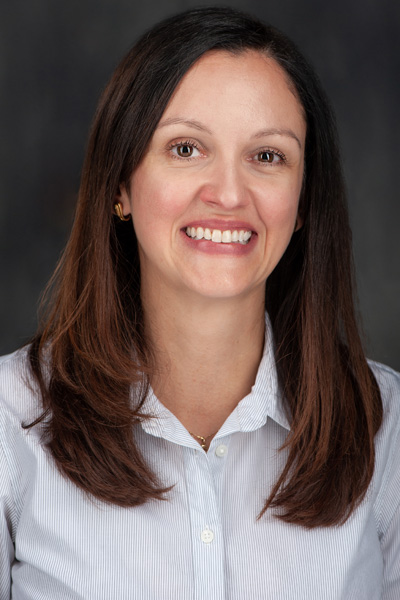
Bruna S. Mussoi, AuD, PhD
Associate Professor
College of Health Professions, Department of Audiology and Speech Pathology
Dr. Bruna Mussoi is the featured spotlight for this month's College of Health Professions Research. She joined the University in August 2024 as Associate Professor in the College of Health Professions, Department of Audiology and Speech Pathology. She earned her undergraduate degree in Audiology and Speech Pathology in Brazil, followed by a Master of Arts in Audiology from the University of Iowa, where she was among the last to complete the program before the transition to the Doctor of Audiology degree. After returning to Brazil, Dr. Mussoi worked as a clinical audiologist for three years before moving back to the United States to pursue a lifelong goal of obtaining a Ph.D. and earning her Doctor of Audiology degree. Earning a clinical certification to practice in the United States. Her combined clinical and research experiences have deeply influenced her current work and contributions to the field.
What inspired you to pursue a career in Audiology?
I have always enjoyed interacting with and helping people. In high school, I gravitated towards health professions, and after seeing a Speech Pathologist myself, I decided to pursue a degree in Speech Pathology and Audiology. Like many Audiology students, I found that the more I learned about Audiology through my undergraduate coursework and clinical experiences, the more I realized it was a better fit for me. After getting a taste of research during my Master’s degree, I returned to Brazil to work as an audiologist. During this time, I developed a passion for working with older adults, particularly because I found it fascinating that they often struggle to understand speech in noisy environments, even without significant hearing loss. While I enjoyed working in the clinic and interacting with patients, I constantly found myself asking research questions. In 2009, I was thrilled to return to the University of Iowa to pursue my Ph.D. During my graduate studies, I began teaching and discovered that I enjoy working with students just as much as I do with patients.
What has been the most rewarding aspect of your career thus far, and what challenges have you faced along the way?
I find both teaching and research incredibly rewarding. I truly enjoy mentoring and working with students, both in the classroom and the lab. Investigating research questions that have the potential to impact clinical practice is equally fulfilling. I feel fortunate to have the opportunity to shape the next generation of clinicians and researchers while also contributing to the growing body of scientific knowledge in Audiology. Although there are always small challenges in both teaching and research, I believe the biggest challenge is successfully balancing the various responsibilities that come with academia.
Could you give us a brief overview of your current research project on "Auditory neuroplasticity following experience with cochlear implants"?
Cochlear implants significantly enhance access to sounds and improve quality of life, though the degree of benefit varies among individuals. The most substantial improvements in speech understanding typically occur within the first six months post-implantation. These gains are widely believed to result from neural changes in the auditory system. While there is strong evidence supporting these neural changes in children following cochlear implantation, evidence in adults with bilateral hearing loss remains limited. This study aims to investigate how neural responses evolve with cochlear implant use, compared to long-term hearing aid use. Participants, including those who are candidates for cochlear implants (whether they choose implantation or continue with hearing aids), will be assessed at multiple points, from pre-implantation through six months post-implantation. The findings will enhance our understanding of how cochlear implant use affects cortical auditory neural responses in older adults and how these changes relate to speech understanding abilities.
What motivated you to focus on auditory neuroplasticity and its relation to cochlear implants?
This topic has intrigued me for quite some time. Cochlear implants are an incredible technology that can significantly benefit individuals with severe hearing loss, who no longer gain much from hearing aids. However, after being processed by cochlear implants, sounds like speech and music become highly degraded. Despite this, it is remarkable that adults, including older adults, can not only adapt to the altered sounds but also improve their ability to understand speech. I found it intuitive that neuroplastic changes must be supporting these improvements in speech perception following cochlear implantation. To my surprise, there is limited evidence of such neuroplasticity in older adults with bilateral hearing loss, even though they make up a large portion of cochlear implant recipients. Additionally, recent studies suggest that those who wear their cochlear implants for more hours each day experience greater benefits. This has led me to focus on investigating auditory neuroplastic changes, both in relation to time post-implantation and device usage, and how these changes contribute to speech perception outcomes.
How do you see your research contributing to advancements and real-world implications in cochlear implant technology or therapy for individuals with hearing impairments?
This line of research will have a direct impact on clinical practice by enabling us to objectively measure the individual benefits of cochlear implant use and providing valuable insights for counseling cochlear implant users. Additionally, with the growing population of older adults and a public health focus on expanding access to cochlear implants, I anticipate that findings from this research will support advocacy efforts aimed at increasing cochlear implant availability for older adults.
What do you like to do outside of school (i.e., personal hobbies or interests)?
I enjoy spending quality time with my family. We love exploring new places and trying out different restaurants. Traveling is also a passion of ours, as it gives us the opportunity to meet new people and experience different cultures.
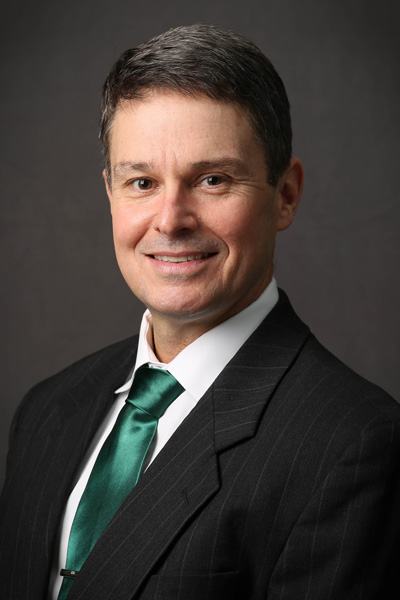
Barry Dale, PhD, PT, DPT, MBA, OCS, SCS, ATC, CSCS
Professor, Chair, and Program Director of Physical Therapy
College of Health Professions, Department of Physical Therapy
Dr. Barry Dale is in the spotlight this month at the College of Health Professions! He joined us back in July 2021 and now serves as the Professor and Chair of the Department of Physical Therapy. Dr. Dale has quite an impressive background—he earned his BSPT and MBA from South Alabama, his MAE from UAB, his PhD from the University of Alabama, and later, his DPT from the University of Tennessee at Chattanooga. With a deep passion for biomechanics and exercise physiology,
Dr. Dale's research is all about applying these fields to Orthopaedic and Sport rehabilitation. He's been a Physical Therapist for 30 years and has spent 22 of those years as a dedicated faculty member.
What are some highlights or significant milestones from your career in physical therapy?
Some of the highlights from my physical therapy career include being honored with the "Outstanding Teaching/Advising Award" from the University of Tennessee at Chattanooga and the "Excellence in Teaching Award" from the University of South Alabama.
Can you give us an overview of your current research project on neural networks and what you want others to know about this research?
Here's a quick rundown of my current research on neural networks and what I want to share about it: I'm working on a machine learning technique inspired by the way the human brain is structured and functions. It involves layers of interconnected nodes, or "neurons," that process input data and produce an output. The connections between these neurons have weights that determine how strong the signal is as it passes through.
Right now, I'm focusing on training these neural networks using historical data to predict future trends or outcomes. So far, I've got some promising preliminary data on predicting success rates for the Physical Therapy Licensure Exam and identifying certain characteristics from smartphone accelerometer data during standardized movement tasks. The accuracy of these models is impressive—over 90% in correctly identifying who will pass or fail the licensure exam and in distinguishing gender assigned at birth and whether someone has a history of resistance training based on their movement patterns from a smartphone accelerometer.
What inspired you to pursue this area of research?
I'm really intrigued by predictive analytics and how it can help us set our students up for success by spotting areas where they might need some extra support early on. Take, for example, a new student who's struggling with time management—they could really benefit from working with the Student Success team here at UTHSC. But how do we figure out who needs that support? One way is by using predictive analytics with neural networks. These tools help us sift through all the data available to program directors, allowing us to make informed decisions that directly benefit our students. After all, when our students succeed, our programs do too.
Are there any specific populations or demographics that you are focusing on in your study?
Right now, I'm training and testing the neural network models with a focus on student success in the DPT program and on physically active individuals.
What role do you believe physical therapy plays in the broader healthcare landscape, especially with the integration of new technologies?
Physical therapy is becoming even more impactful with the integration of technologies like machine learning and neural networks. These tools allow PTs to develop highly personalized treatment plans by analyzing large datasets of patient information to identify patterns and predict outcomes. This means we can tailor interventions to each individual’s specific needs, making them more effective.
By analyzing patient data over time, neural networks can also predict potential issues before they arise, such as identifying patients at risk of developing certain musculoskeletal conditions or predicting recovery likelihood after an injury. This enables PTs to take proactive measures, like adjusting treatment plans or recommending preventive exercises.
Neural networks are also enhancing diagnostic capabilities by helping PTs analyze complex data, such as gait analysis, muscle activity, and biomechanics. This is especially useful for detecting subtle abnormalities that might be missed by the human eye but can be picked up through data-driven analysis.
With the rise of telehealth, PTs can now monitor patients remotely, and neural networks play a big role here too. They can analyze data from wearable devices, like movement trackers or sensors, to assess a patient’s progress and adjust treatment in real time, even from a distance.
When it comes to measuring outcomes and improving the quality of care, neural networks can analyze data from different treatment approaches across large patient populations. This helps PTs and healthcare organizations refine their practices, adopt evidence-based techniques, and ultimately provide better care.
Finally, neural networks are being integrated into rehabilitation robotics, offering real-time feedback and adjustments during therapy. These devices adapt to a patient’s specific movements and needs, providing personalized rehabilitation that speeds up recovery and improves outcomes.
What advice would you give to students or early-career researchers interested in physical therapy and machine learning?
It’s important to build a strong foundation in both fields. Start by developing a deep understanding of human anatomy, physiology, biomechanics, and the principles of physical therapy. This knowledge is crucial for identifying clinical problems where machine learning could make a real impact. At the same time, learn the basics of machine learning, including algorithms, data processing, and model evaluation. Online courses, textbooks, and tutorials can be great resources for this.
Focus on real-world clinical challenges that could benefit from machine learning, like predicting patient outcomes, optimizing treatment plans, or improving diagnostic accuracy. Your background in physical therapy will guide you in finding meaningful applications for machine learning. Additionally, get hands-on experience working with healthcare datasets to understand the specifics of clinical data, such as electronic health records, imaging data, or data from wearable devices. Don’t forget to keep data privacy and ethical considerations in mind as you work in this space.
Tell us something about yourself (a fun fact or hobby).
I'm really into mountain biking and occasionally like to mix it up with some gravel biking. After spending time dealing with hurricanes on the Gulf Coast, I ended up getting my amateur radio license (KN4CCX) and became a certified chainsaw operator for disaster relief.
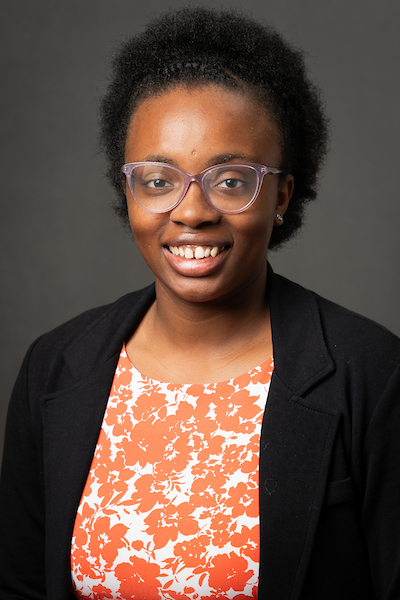
Faith Blanchard-Ludanga
Student Physical Therapist, College of Health Professions, Department of Physical Therapy
Faith Blanchard-Ludanga is the College of Health Professions Research featured spotlight this month. She is a third-year physical therapy student, dedicated to her academic and research pursuits. As a wife and mother of two boys, Faith draws inspiration from her family. Her husband, a South Sudanese refugee, and their experiences as a refugee family in Uganda, where their first son was born, have significantly shaped her career path. Faith’s encounters with the healthcare system during her pregnancy and delivery in the refugee community have driven her commitment to complete her physical therapy degree and engage in research that seeks to address the challenges faced by her community.
Describe how your understanding of physical therapy has evolved since you started the graduate program?
My initial introduction to physical therapy occurred when my mother was referred for treatment due to chronic back pain. I was deeply impressed by the therapist's personable and caring approach. As I have advanced through my program, my intrigue for physical therapy has transformed into a genuine passion for my future profession. I vividly recall being captivated during our introductory classes as we explored the extensive scope of physical therapy practice and the diverse specialties available, ranging from oncology to postpartum care.
Physical therapy is an incredibly versatile field, adept at meeting the varied needs of many individuals. As movement-system experts, we recognize that movement is fundamental to the human experience. Whether assisting a bed-bound patient with mobility or helping an injured individual return to work and support their family, we are trained to significantly enhance our patients' quality of life and functional capabilities.
The aspects of physical therapy I value most are its relationship-driven nature and our capacity to advocate for our patients. We are privileged to spend an hour or more with each patient, allowing us to thoroughly understand their unique circumstances and the barriers that may impede their health outcomes. This in-depth interaction enables us to form meaningful connections and provide tailored, effective care.
What publications or presentations have you contributed to and what have you learned from those experiences?
During Graduate Research Day (GRD), I presented a poster entitled "Addressing Inequities in Maternal Health: Exploring Socioeconomic and Healthcare System Factors Across Culturally Diverse Regions." The primary objective of this research was to enhance understanding of the various interventions being implemented in sub-Saharan Africa to reduce maternal mortality, given that an estimated 70% of all maternal deaths in 2020 occurred in this region.
Through this experience, I have come to appreciate the significant challenges and immense importance of research. GRD featured a diverse range of topics, providing me with valuable learning opportunities. I particularly enjoyed sharing insights on maternal mortality with fellow participants, including biochemists, cancer researchers, and medical students.
While data on maternal mortality is publicly available, not everyone has the motivation or passion to delve into this critical issue. My experience has fueled my commitment to advancing research and addressing these pressing health disparities.
What have been the most significant findings or contributions from your research so far?
One of the main findings of the research was that countries meeting the United Nations' Sustainable Development Goal for reducing maternal mortality employ a holistic approach, utilizing interventions across multiple sectors and societal levels. A particularly notable finding relevant to my future career as a physical therapist was the correlation between the presence of skilled health professionals and reduced mortality rates. Interestingly, the data showed a stronger correlation between the number of nurses and midwives and reduced mortality rates than with the number of physicians. This may be attributed to the fact that nurses and midwives often have more time and interactions with patients than physicians.
As a future physical therapist, I am intrigued by the potential impact of including physical therapists on maternal care teams. Physical therapists, as skilled health professionals who spend significant amounts of time with patients, could contribute to the early detection of complications. Additionally, we are well-equipped with the expertise to address the musculoskeletal changes that occur during pregnancy and delivery, potentially mitigating some complications and improving overall maternal health outcomes.
You have a mentor; can you tell us the following: How did you meet? How has this person influenced your academic and research journey? How does the person help you navigate academic and research challenges or obstacles?
My mentor, Mia Fox, PT, DPT, and I connected through the College of Health Profession’s Ambassador Program. I am profoundly grateful for Mia's guidance and support. Upon our first meeting, she inquired about the specific areas where I needed assistance. I expressed my interest in research and my uncertainty about how to begin. Mia dedicated several meetings to help me clarify my research interests and formulate a strong research question.
Throughout this process, she addressed numerous questions I had and ensured I remained accountable to my research commitments, despite my other engagements. Additionally, Mia provided invaluable assistance in creating a research poster and effectively presenting our findings. Her guidance enabled me to convey the main points of our research clearly and concisely.
What are your future career goals and how has your graduate education shaped these aspirations?
My career goals are to contribute to the improvement of maternal outcomes globally, excel as a skilled physical therapist, and enhance the quality and quantity of research and data collection in sub-Saharan Africa. My education has equipped me with the tools to be an excellent physical therapist and a strong advocate for my patients. Additionally, it has highlighted the importance of contributing to the field beyond clinical practice through research.
What do you like to do outside of school (i.e., personal hobbies or interests)?
I enjoy outdoor activities with my boys, spending time with friends (especially when good food is involved), and engaging in creative pursuits such as drawing, painting, and singing loudly and off key. Recently, I have taken up sewing and successfully completed my first pair of pants with a whole lot of supervision and corrections.
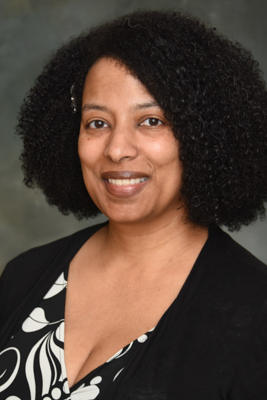
Keisha Brooks Burnett, EdD
Associate Professor
Program Director, Cytotechnology and Histotechnology
College of Health Professions
Department of Diagnostic and Health Sciences
Dr. Keisha Burnett is featured in this month's College of Health Professions Research Spotlight. Dr. Burnett joined the College of Health Professions as an Instructor in April 2005 and has since advanced to the position of Associate Professor in the Department of Diagnostic and Health Sciences. Her career began 25 years ago as a cytotechnologist and has dedicated 19 years to the Master of Cytopathology Practice Program, serving as a faculty member and, since 2019, as the program director. She holds a Bachelor of Science in Biology from the University of Tennessee at Martin and a Bachelor of Science in Cytotechnology from the University of Tennessee Health Science Center. Furthering her education, Dr. Burnett obtained a Master of Science in Healthcare Administration from Central Michigan University and a Doctoral degree in Educational Leadership from the University of Memphis. She is also a Board-Certified Cytologist through the American Society of Clinical Pathology. Dr. Burnett research interest is focused on Cytopathology, Higher Education, and Instructional Design and Technology.
What attracted you to pursue a career in higher education and what is the most gratifying aspect of working in education?
I am deeply passionate about my work, and since graduating from the cytology program in 1999, I have consistently sought opportunities to teach and mentor aspiring cytologists. During my tenure in private practice, I eagerly volunteered to assist in the instruction and mentorship of cytology students rotating through the lab. It was an exciting and honorable moment when I was invited to teach in the very program from which I graduated. The most gratifying aspect of my role in education is witnessing the moment when a concept finally clicks for my students. Seeing that lightbulb moment is my indicator that I have successfully fulfilled my responsibilities.
Can you share a project or initiative you're currently working on and what you want others to know about this research, and why it excites you?
I am a co-investigator on a $1.3 million grant from the National Institute of General Medical Sciences, alongside Dr. Jacen Moore and Dr. Rebecca Reynolds. The grant, titled "High School to Health Care" (HS2HC), aims to provide summer camp opportunities in medical lab science and health data science for rural high school students. Additionally, the grant funds a week-long summer session for rural high school teachers, focusing on lab and data science. This program is designed to equip teachers with curriculum resources that can be tailored to their biology, chemistry, healthcare, and health science classes.
I am also collaborating with my cytology students on a research project examining the proliferation patterns of benign leiomyomas, commonly known as uterine fibroids. Uterine fibroids are the most common benign smooth muscle tumors of the female reproductive system and are particularly prevalent among women of African descent. As someone personally affected by uterine fibroids, I shared my experience in my gynecologic cytopathology course and discovered that several students have African American family members who have also been affected. What began as an informal class discussion has evolved into a research project that we aspire to present to the scientific community.
How do you balance teaching, research, and other responsibilities as a faculty member?
Balancing teaching, research, and administrative responsibilities as a faculty member and program director can be complex and occasionally stressful. To effectively manage these demands, I prioritize tasks and maintain an electronic calendar to track important deadlines. Additionally, I am proactive in delegating tasks to faculty members, which helps reduce stress and empowers them in their roles.
Tell us something about yourself (a fun fact or hobby).
Although it has been some time since I last engaged in this hobby, I enjoy creating intricate beaded necklaces and bracelets. Once my schedule allows, I plan to revisit this craft and resume making jewelry.
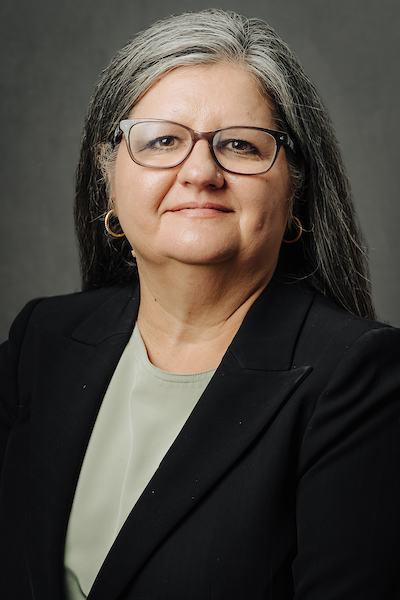
Rebecca B. Reynolds, EdD
Professor and HIIM Program Director
College of Health Professions
Department of Diagnostic and Health Sciences
Dr. Rebecca Reynolds is featured in this month’s College of Health Professions Research Spotlight. A Professor in the Department of Diagnostic and Health Sciences, she joined the College of Health Professions as an Assistant Professor in July 2002 and has made UTHSC her professional home ever since. Dr. Reynolds earned her EdD in Higher and Adult Education from the University of Memphis in 2008. Her research focuses on Health Information Management, with extensive experience in managing health data and mapping ICD-9 and ICD-10 codes to identify specific conditions. Dr. Reynolds is deeply knowledgeable about the healthcare delivery system and the flow of clinical information, which is often influenced by reimbursement rules. This expertise is crucial for locating patient information from various databases, as reimbursement rules dictate how clinical information is translated into medical codes. Additionally, she has extensive knowledge of legal issues related to health information, privacy, security, data structure, and secondary data use. Dr. Reynolds' real-world recognition of issues impacting medical code assignment enhances her contributions to research projects. As the HIIM program director, she helped establish a track in the Health Outcomes and Policy Research doctoral program in the College of Graduate Sciences. Dr. Reynolds enjoys being part of the UTHSC community and supports the mission and values that UT brings to the citizens of Tennessee.
What attracted you to pursue a career in higher education and what is the most gratifying aspect of working in education?
I love challenges and change, which is why I have enjoyed my years working in education at UTHSC. I am honored to work here and oversee our HIIM program. I enjoy working with a diverse range of people, and interacting with students from various backgrounds and with different goals continually challenges and broadens my perspectives. It is incredibly rewarding to see our graduates excel in their personal and professional lives and knowing that our field offers excellent opportunities for career advancement continues to inspire and excite me.
Can you share a project or initiative you're currently working on and what you want others to know about this research, and why it excites you?
I am a co-principal investigator on a $1.3 million grant from the National Institutes of Health Science Education Partnership Award (SEPA) program. This grant is funding the creation of an educational program called High School to Health Care (HS2HC), aimed at promoting lab and data science careers among K-12 students and science educators in rural West Tennessee. The HS2HC program has three main components. The first is a dual enrollment course through UT Martin, offering lab and data science curricula to 11th and 12th-grade students. The second component focuses on professional development and training for rural teachers, allowing them to learn about these professions, explore their potential, and facilitate outreach by COHP faculty to promote UTHSC and lab and data science careers within the community. The final component is a summer experience where students engage hands-on with lab and data science professions, interact with STEM content, and work directly with UTHSC COHP professional faculty. Our goal with HS2HC is to increase awareness of lab and data science fields and to enhance the health literacy skills of students and their families. We are extremely excited about the potential impact of this program.
What additional information or insights you would like to share about your area of research and the impact it will have on your field?
Lab and data sciences are among the fastest-growing professions in the health field. To meet the increasing workforce demand, we must find new and innovative ways to promote and educate students and the public about these fields. Grants and programs like ours play a crucial role in addressing the shortage of qualified lab and data science professionals by creating a pipeline of students who may enter these professions. Additionally, we hope our community outreach efforts will improve health literacy in rural areas of West Tennessee and beyond.
How do you balance teaching, research, and other responsibilities as a faculty member?
One of my mentors, Beth Bowman, once told me that being a faculty member is like being an entrepreneur; you must run your own business, which is you. Working in higher education isn't for everyone, as it requires balancing a variety of skills. This ability develops over time, and incorporating different missions into your projects is one way to succeed in academia. Another crucial aspect is having supportive colleagues who help you improve. My colleague, Dr. Marcia Sharp, has been instrumental in my success in higher education.
Tell us something about yourself (a fun fact or hobby).
As a recent empty nester, I'm transitioning from being a busy mom to rediscovering my hobbies and reconnecting with friends. I enjoy spending time with my son and husband in the country and at the beach.
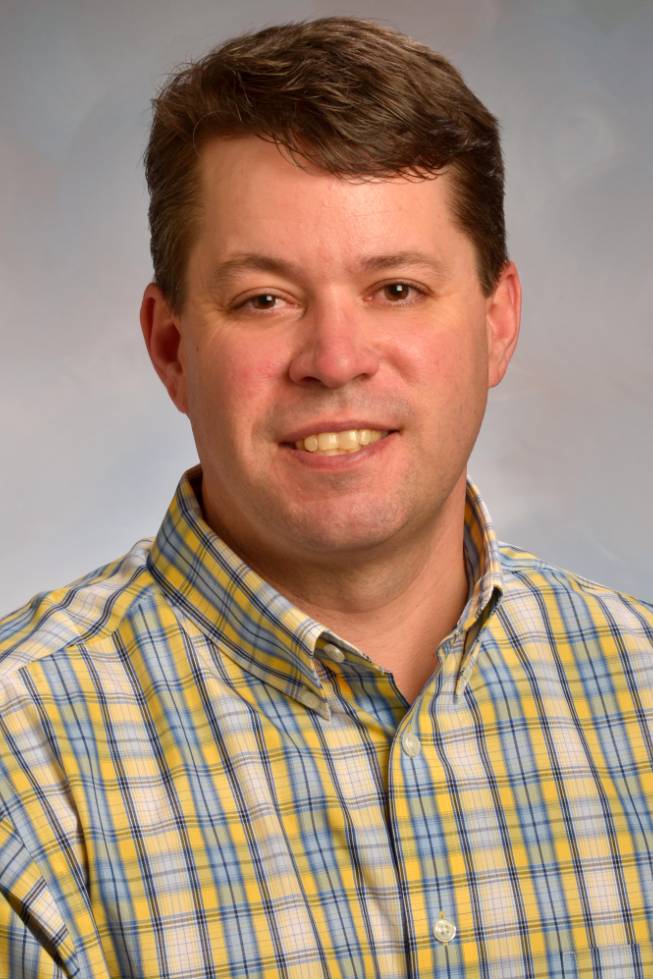
Professor and Program Director in Audiology
Assistant Dean of Faculty Affairs
pplyler@uthsc.edu
865.974.7588
Dr. Patrick Plyler is the focus of this month’s College of Health Professions Research
Spotlight. He is Professor and Program Director for the Department of Audiology and
Speech Pathology at UTHSC in Knoxville. He is also the Assistant Dean of Faculty
Affairs for the college. Dr. Plyler received his PhD in Speech and Hearing Science
from the University of Tennessee Knoxville and joined the Department of Audiology
and Speech Pathology (ASP) as an Assistant Professor in 2003. For over 25 years,
he has researched improving speech perception deficits in listeners with impaired
hearing, the efficacy and effectiveness of advanced features in hearing instruments,
and the acceptance of background noise. As evidence of his outstanding accomplishments,
Dr. Plyler received the 2023 University of Tennessee Alumni Association Distinguished
Service Professor Award in recognition of demonstrated excellence as a scholar and
teacher in the classrooms and laboratories of the University of Tennessee.
What attracted you to pursue a career in higher education and sparked your research
interests as an Audiologist and Hearing Professional?
As an undergraduate student, I wanted to become an English teacher, and during high
school, I enrolled in an observation course and decided that path was not for me.
My sister is an Occupational Therapist, and she encouraged me to consider Speech-Language
Pathology, so I changed my major to Audiology Speech Pathology. I enjoyed the SLP
courses but found the Audiology courses more interesting. I guess you could say I
found Audiology “through the backdoor.” After earning my Masters in Audiology from
UTK in 1993, I worked as an Audiologist at the Bill Wilkerson Center, which also housed
the Audiology program for Vanderbilt University. During this time, I supervised and
taught clinical students and found I enjoyed teaching the students as much as seeing
the patients. I also had the opportunity to participate in research projects while
at Bill Wilkerson. These experiences led me to consider an academic career, as I always
wanted to become a teacher. My mentor, Dr. Sam Burchfield, encouraged me to pursue
a PhD; the rest is history.
Can you summarize your current research on digital hearing instruments, what you want
others to know about this research, and why it excites you?
One obstacle facing audiologists during hearing aid evaluations is determining the
appropriate technology level for a given patient. Modern hearing aids vary significantly
in terms of their technological sophistication and, consequently, the cost. Hearing
aids at the basic technology level include noise-combatting features such as directional
microphones and noise-reduction algorithms. Hearing aids at the premium technology
level offer these features but include additional complex automatic and adaptive versions
and other features not included in the basic-level hearing aids. It would stand to
reason that a more advanced technology level would provide increased benefits to the
user in daily life, thereby justifying the increased cost of premium technology devices.
However, research evaluating the effect of technology level on patient outcome measures
does not support this assumption for all users.
Recently, my colleague Dr. Jennifer Hauslanden and I (and our AuD students) completed
two research projects that evaluated the effect of technology level on patient outcome
measures for inexperienced and new hearing aid users. Each study obtained outcome
measures within and beyond the laboratory setting. Results revealed similar outcomes
between technology levels on most measures; however, using the premium technology
in both studies significantly improved the ability to tolerate background noise. Interestingly,
preference results for experienced and new users suggested listeners in more demanding
environments preferred premium hearing aids to basic hearing aids. This result may
be due to their improved ability to tolerate noise, which was noticeable in their
demanding daily lives. Our findings suggested that individual characteristics such
as noise tolerance and listening demands may be useful to audiologists when comparing
hearing aid technology levels for hearing aid users.
Are there any additional information or insights you would like to share about your
research and the impact you hope it will have in audiology?
I would like to shed some light on the topic of over the counter (OTC) hearing aids.
OTC hearing aids are entry-level products for individuals with mild-to-moderate hearing
loss and those who have limited access to an audiologist or with limited financial
resources. While this sounds great, I am concerned with educating those outside of
our profession about the pros and cons of OTC hearing aids. We all learned early in
our audiology training that our patients need to be counseled after a hearing aid
fitting regarding realistic expectations, as hearing aids do not correct hearing loss.
I am concerned OTC users will not understand the limitations of any hearing aid, much
less an OTC. Also, many potential users will seek the advice of health care providers
such as their primary care physician, a nurse, or a pharmacist. These professionals
need some basic training on this topic, and they truly need to understand that obtaining
OTC hearing aids for hearing loss is not the same as buying reading glasses for vision
problems.
What advice would you give to someone just starting their career?
Well, this may sound simplistic, but I would advise finding a setting where you feel
like part of the family and in a location you enjoy.
Tell us something about yourself (a fun fact or hobby).
My wife is also a faculty member in ASP as a clinical audiologist specializing in
pediatrics. We have two wonderful children, Carson (23) and Caroline (19). We are
huge sports fans and enjoy watching and attending sporting events together.
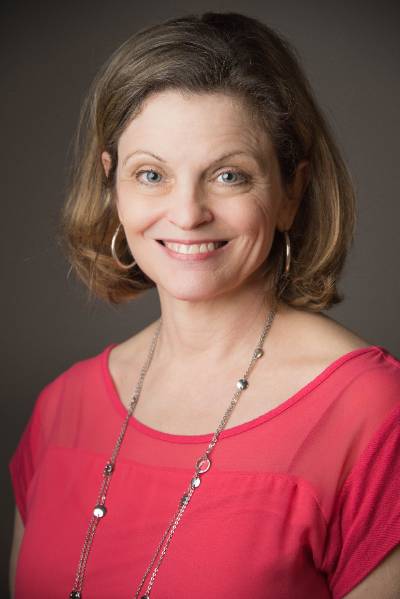
Associate Professor College of Health Professions Department of Occupational Therapy
azachry@uthsc.edu
This month the College of Health Professions Spotlight is focused on Anne Zachry, PhD, OTR/L. Dr. Zachry received her PhD in Educational Psychology & Research from the University of Memphis in 2010 and she joined UTHSC in 2013 as a faculty member in the Occupational Therapy program and currently serves and as the Chair of the UTHSC Department of Occupational Therapy program. Dr. Zachry’s research interests include enhancing infant and child development through the provision of occupational therapy services. Her blog, “Pediatric OT Tips” has been ranked as a top OT blog for the past 7 years. In 2016, she received the Student Government Association Executive Council Excellence in Teaching Award and was a finalist for the Memphis Business Journal Health Care Heroes Award. Dr. Zachry received the UTHSC Alumni Association Public Service Award in 2016. Her books, “Retro Baby” and “Retro Toddler” were published by the American Academy of Pediatrics. “Retro Baby” won the Benjamin Franklin Gold Award in 2013.
Her primary research interests are Pediatric Occupational Therapy, Infant and Child Development and Adverse Childhood Experiences.
Could you tell us about your research team's current HRSA: Health Resources and Services Administration funded project titled "RISE-CAY"? What do you want others to know about this project, and why does it excite you?
The RISE-CAY project, a collaboration between the University of Memphis and the UT Health Science Center, is funded by the Health Resources and Services Administration (HRSA) Behavioral Health, Workforce Education, and Training-Children, Adolescents, and Young Adults (BHWET-CAY) Program for Professionals. RISE-CAY stands for Recruiting Interprofessional Scholars for Excellence in Childhood, Adolescence, and Young Adulthood. The grant targets crucial areas like integrated behavioral health, cultural humility and competency, adverse childhood experiences, telehealth, and social determinants of health, particularly in rural and underserved communities. The project encompasses four disciplines across seven-degree programs, from social work and counseling to psychiatry and occupational therapy.
The program's structure, which includes synchronous training sessions, practicums, internships or residencies, and a culminating case competition, exemplifies comprehensive education. It offers substantial stipends for participants, recognizing the importance of their dedication. For me, the most exciting aspect is the interdisciplinary nature of the grant. The collaboration between multiple programs at two respected institutions aims to strengthen healthcare delivery to underserved populations. There is potential to make a significant difference in the lives of young individuals, supported by expertise from a broad spectrum of healthcare fields.
In your professional career, what do you consider to be your greatest achievement or most rewarding?
In my early years as an occupational therapist, I treated a precious 3-year-old little girl, named Emma. Emma had sustained a traumatic brain injury that made even the most basic tasks extremely challenging. One day, during a treatment session Emma’s father asked, "How do you know what you are doing will help her?" After a long deep breath, I responded, "Even though I don't always know what activities will be the magic ones that will help, I do know the treatment activities selected are all grounded in research." What I didn't share with Emma's father that day was how much time I regularly spent searching to find an evidence-based treatment approaches. My passion and dedication to help this child overcome her injury proved successful
and Emma would grow up to become an independent adult! Years later, this family inspired me to further my education in advancing intervention research in the field of occupational therapy. In 2009 I earned my PhD in Educational Psychology & Research.
What is the most important thing you have learned about having a successful career and what advice would you give to someone just starting their career?
Having grit, determination and never giving up are important qualities to possess. I learned this while I was looking for a publisher, for my first book. I received so many rejection letters, but I refused to let that deter me and I eventually found a publisher! Submitting to peer-reviewed journals and reviewing student course evaluations can also be discouraging. The key is to stay positive and keep moving forward.
In your professional career, what do you consider to be your greatest achievement or most rewarding?
My greatest and most rewarding achievement was having my parenting books published by the American Academy of Pediatrics (AAP). The AAP is extremely selective with the authors that they choose to publish. I was extremely honored when they committed to publishing “Retro Baby” and “Retro Toddler.”
Tell us something about yourself (a fun fact or hobby).
I love to read and ride horses! My horse, Sawyer, is a beautiful buckskin Tennessee Walking Horse. Spending a Saturday afternoon riding him is a wonderful way to relax.
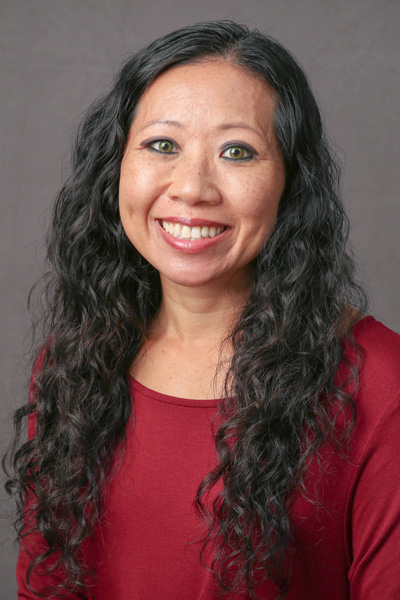
April Hilsdon, MOT, OTR/L
Instructor/ Academic Fieldwork Coordinator acheung1@uthsc.edu
Introduction:
This month's College of Health Professions Research Spotlight is on April Hilsdon MOT, OTR/L. She is an Instructor and Academic Fieldwork Coordinator for the Department of Occupational Therapy. April was the first in her family to pursue higher education, and she earned her master's degree in occupational therapy from UTHSC in 2008. She brings over fifteen years of diverse clinical experience to her Department of Occupational Therapy roles. Her specialty is in adult rehabilitation with a focus on brain injury and stroke recovery across various settings, from outpatient to home health. She has a strong commitment to Occupational Therapy that extends to nurturing the development of future professionals by enhancing her students' educational journey. Her approach emphasizes the importance of critical thinking and practical skills essential for success in occupational therapy. A passion and commitment to student mentorship drove April's journey into higher education. She enjoys facilitating student growth by working closely with them as a fieldwork educator. As an occupational therapist, she sees the impact that strong clinical judgment and reasoning skills can make in direct client care. The role of academic fieldwork coordinator allowed her to return to the program that shaped her and to now challenge students to grow beyond the classroom.
Her primary research interests are investigating strategies that enhance student performance and adaptability in clinical education. The goal is to equip students with the skills to navigate the complexities of healthcare settings successfully, which is essential for their professional growth and leads to better outcomes for their clients.
Could you tell us about your research team's current HRSA: Health Resources and Services Administration funded project titled "RISE-CAY"? What do you want others to know about this project, and why does it excite you?
The RISE-CAY project, a collaboration between the University of Memphis and the UT Health Science Center, is funded by the Health Resources and Services Administration (HRSA) Behavioral Health, Workforce Education, and Training-Children, Adolescents, and Young Adults (BHWET-CAY) Program for Professionals. RISE-CAY stands for Recruiting Interprofessional Scholars for Excellence in Childhood, Adolescence, and Young Adulthood. The grant targets crucial areas like integrated behavioral health, cultural humility and competency, adverse childhood experiences, telehealth, and social determinants of health, particularly in rural and underserved communities.
The primary investigator, Dr. Susan Neely-Barnes, is committed to ensuring RISE-CAY incorporates an interprofessional approach. The project encompasses four disciplines across seven-degree programs, from social work and counseling to psychiatry and occupational therapy. The program's structure, which includes synchronous training sessions, practicums, internships or residencies, and a culminating case competition, exemplifies comprehensive education. It offers substantial stipends for participants, recognizing the importance of their dedication. For me, the most exciting aspect is the interdisciplinary nature of the grant. The collaboration between multiple programs at two respected institutions aims to strengthen healthcare delivery to underserved populations. There is potential to make a significant difference in the lives of young individuals, supported by expertise from a broad spectrum of healthcare fields.
What is the most important thing you have learned about having a successful career, and what advice would you give someone just starting their career?
The most important lesson I've learned in my career is the power of adaptability. It's about having the courage to reevaluate and adjust your goals when unexpected changes occur. This adaptability has been crucial in my personal and professional development. For those just beginning their careers, my advice is to embrace the process of continuous learning and to actively seek out challenges. Find mentors who can guide you, be open to new experiences, and always make room for your well-being alongside professional ambitions. Above all, be resilient and maintain a positive attitude. These qualities will serve as your foundation during challenging times. Success is not just achieving your goals but evolving with them.
In your professional career, what do you consider to be your greatest achievement or most rewarding?
The most rewarding aspect of my career has been the dynamic shift from clinical practice to academia. This transition allowed me to expand my impact on the occupational therapy field. In my role, I have the privilege of shaping the healthcare providers of tomorrow. There's a profound satisfaction in witnessing the growth of my students as they apply their knowledge in various clinical settings. My role in helping them develop their professional abilities and watching them grow into competent therapists is what I consider my most notable accomplishment. Through this teaching and mentorship process, I can leave a lasting mark on the individuals I teach and the broader field of healthcare.
Tell us something about yourself (a fun fact or hobby).
I have a passion for ultra-running! I find it exciting to push the limits of my endurance and determination. My proudest moment as an ultra-runner came in 2022 when I completed the Arkansas Traveler 100-mile race. I love trail running because it's a way to connect with nature and explore beautiful landscapes. Running offers me an opportunity to disconnect from the daily grind, allowing me to clear my mind from the stresses that come with professional and family responsibilities.
